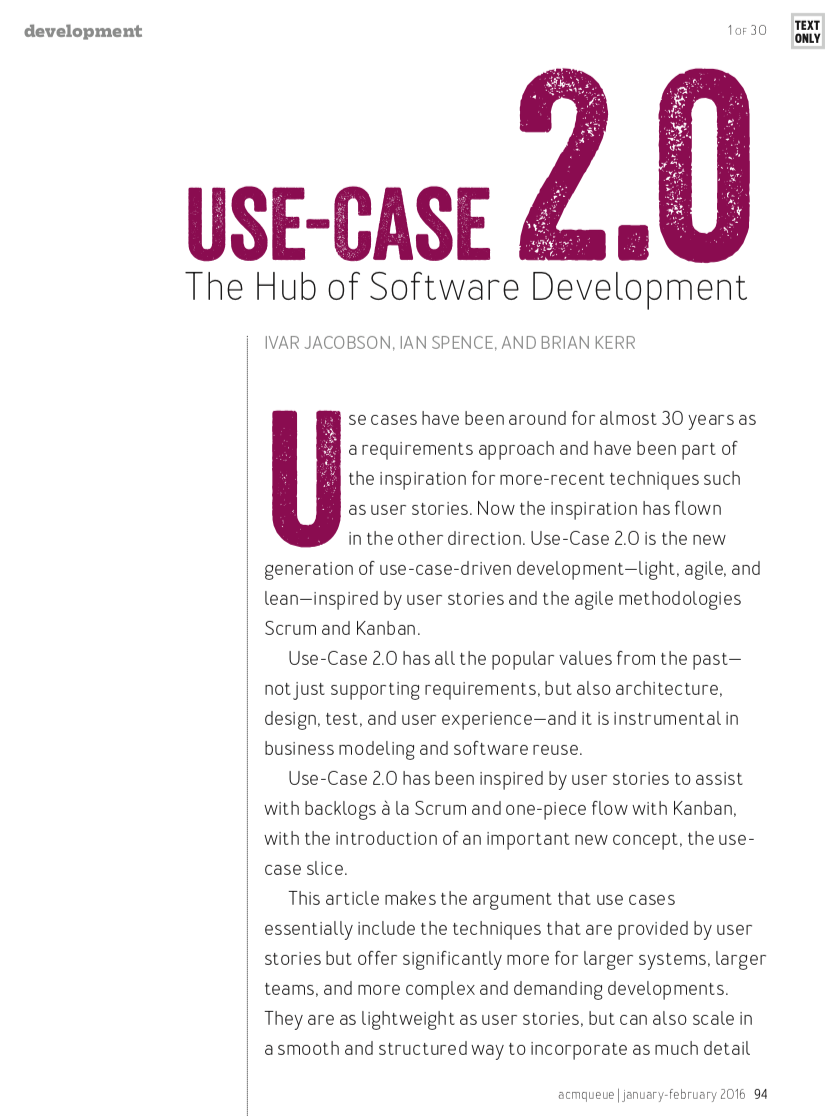Never lose sight of the big picture with Use Case 2.0. The key goals of the system can always be seen as use cases on a visual diagram, while use-case narratives organise individual requirements. These small requirements can be expressed directly inside the use-case narrative or even as traditional user stories. Just zoom in to see the level of detail needed.
AGILE USE CASES ARE EVERYWHERE, IMPACTING EVERYONE AND EVERYTHING THEY DO
Agile Use Cases are Everywhere – Used in all domains such as industrial internet, self-driving cars, and cloud computing.
Impacting Everyone – A common language unifying clients, development and operations, partners, sales, marketing and support.
And Everything They Do – Driving and coordinating the work across all disciplines, and across business, systems, hardware and software.
WHAT USERS ARE SAYING ABOUT USE-CASE 2.0
 "Using Use-Case 2.0 for agile projects seems to be an answer to the most important
challenges we had on the specification and development side using
the Scrum framework.”
Jordi Reineman
"Using Use-Case 2.0 for agile projects seems to be an answer to the most important
challenges we had on the specification and development side using
the Scrum framework.”
Jordi Reineman
Manager Analysis & Design
DUTCH RAILWAYS (NS)
 “Agile use cases has turned out to be the perfect solution for my financial client
for providing the business context, functional scope and just-in-time
value-driven scenarios that fuel a prioritized backlog for agile
delivery.”
Bernie Clark
“Agile use cases has turned out to be the perfect solution for my financial client
for providing the business context, functional scope and just-in-time
value-driven scenarios that fuel a prioritized backlog for agile
delivery.”
Bernie Clark
PRESIDENT OF SCIVIAN LLC











